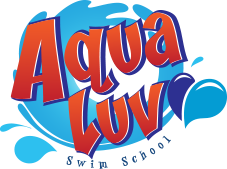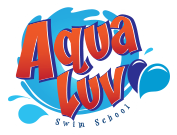
Frequently asked questions
Should my child use floaties when they are learning to swim?
• I've taught swimming lessons, mostly to children. My observation is that floaties are not a good device for children to use, for many reasons. They give the child a false sense of security in the water, which is very dangerous if the child then falls into the water without the floaties--they usually panic and sink under water because they've never properly learned to support their own body in the water. Floaties also cause the child's body to be in a constantly vertical position in the water--again, if the child then falls into the water without the floaties they habitually go into that vertical position and sink.
When teaching swimming, I've found that children who've used floaties have a much harder time learning to swim and learning to trust their own ability to support themself in the water. It takes about twice as long for them to learn to swim, versus a child who has never used floaties. Also, when a good swimmer starts using floaties, it almost always "erases" their knowledge of swimming, as they quickly learn to be vertical and to not support their own weight in the water, both very bad swim habits. Floaties are the number one barrier I have personally found, to a child learning to swim properly, and retain that knowledge. The other one are the goggles.
What is
Survival Swimming?
How Are
Lessons Structured?
What is the
Parent's Role?
How Can You Teach a Baby
Who Cannot Talk?
The ability to float and breathe, regardless of the water's depth, for an indefinite period of time.
The most essential skill we will teach your child is to roll from a face-down position in the water to a face-up independent back float.
Infants and toddlers cannot raise their heads to take a breath. If your child falls face down into the water, knowing how to roll onto a face-up back float can save a life!.
If your baby is walking, then he / she can also learn to swim to the pool edge or steps, rolling over to breathe whenever air is needed. Roll over breathing is a technique that many schools and learn-to-swim teachers don't even attempt because it takes time, skill and patience. But once children learn to roll over to float, relax and breathe whenever air is needed, they can truly swim, stay afloat, conquer fear and experience the joy of swimming.
Initial lessons with Infant Aquatics are one-on-one, approximately 10 minutes in length, 4 days per week for 5-6 weeks.
Each lesson builds upon the previous day's lesson, so there is measurable progress each week.
We encourage parents of toddlers to get in the water for the first few lessons so that your child willl experience less stranger and separation anxiety. Our goal for children of all ages is to establish a relationship of trust between your child and the instructor. Once this occurs, your child will learn to trust him / herself in the water and real progress begins.
Swimming and floating are motor skills that can be taught to babies through repetitive exercises, along with gentle verbal encouragement.
We show the babies what we want them to do, and over a short period of time, they learn the skills necessary to survive. Be assured, we do not throw children into the water! We use a variety of methods, combining the best ideas from swim schools and infant / toddler programs throughout the world. Our goal is to make learning fun so that your child will love his water experience.

Why are the
children crying?
Why only 10 minutes?
Don’t babies
automatically
know how to swim?
How soon my child
will learn to swim?
The children are crying because of the separation anxiety, they are mostly used to mom or a caretaker and are initially more comfortable wither than the instructor, they are also being required to perform tasks for which they have no context like breath holding.
Once they become familiar with the instructor much of the crying subsides.
Babies and kids are not used to making big physical efforts for long periods of time.
Lessons are intense and exhausting. You will be surprised how tired your child leaves the pool.
Short, constant repetitions give better results than long lessons fewer times a week.
Lessons are one-on-one. Your child will get 10 minutes of FULL attention by the instructor.
NO! Babies need to learn to swim.
Before the age of 4 months they have a reflex which automatically allows them to hold their breath and they appear to be swimming, but it is not to remember nor retained. It is a reflex and disappears like all the reflexes of infancy.
Every kid learns at his own pace. Just as other skills (walking, talking, etc), every child is different. In average, children learn in 20 to 24 lessons.
















